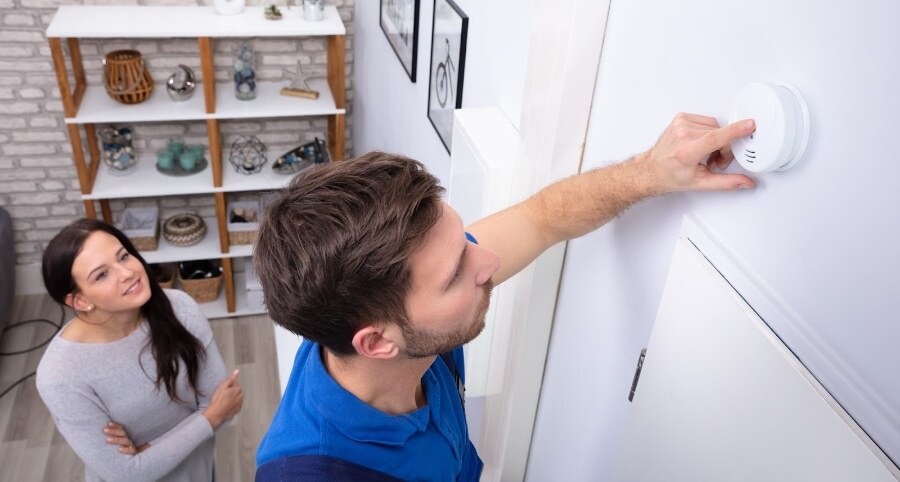Where to install carbon monoxide detectors in your Fort Worth home

Carbon monoxide differs from typical threats home occupants confront as you won’t smell or see it. Despite the fact it’s not detectable with human senses like flooding, fire, and smoke, you can still easily and effectively protect your household with CO detectors. Find where to install carbon monoxide detectors in your Fort Worth residence and investigate the advantages of integrating them in your inclusive security plan.
Where will you find CO?
Because of its dearth of color and smell, carbon monoxide has gained the nickname of the silent killer. It forms because of an incomplete consumption of fuels in home appliances like furnaces, generators, gas stoves, and fireplaces. Most people won’t encounter difficulties with their fuel-burning appliances if they maintain them regularly. But if you skip maintenance or don’t have enough ventilation, a build-up of this potentially lethal gas can occur.
Early indications of CO poisoning include nausea, vomiting, headaches, and dizziness. These typically occur at lower levels of CO. Being exposed to higher levels for an extended period can cause life-threathening medical issues and even death.
Suggestions on where to install Fort Worth carbon monoxide detectors
Each home ought to have a minimum of one CO detector. Really, you ought to install them on every floor, and that includes basements where many fuel-burning appliances are frequently located. Follow these recommendations on where to install Fort Worth carbon monoxide detectors:
-
Install one within 10 feet of sleeping quarters. This positioning is most important, so affix it here in the event you only use one carbon monoxide detector.
-
You should have a CO detector on all levels of your property, especially on ones with gas-burning appliances.
-
To circumvent false alarms, keep them no less than 10 feet away from causes of carbon monoxide, like gas stoves. A small amount of CO may be released when gas-burning appliances come on.
- Avoid spots near doors and windows, as outside air will lessen the unit’s effectiveness.
-
Install carbon monoxide detectors in rooms above attached garages.
As you would with fire alarms, test your CO units regularly, wipe away dust and grime as needed, and avoid mistakenly placing something next to them. Generally speaking, get new detectors every 5-6 years.
Improve safety by including CO detectors in your home’s security system
Modern home security systems provide more layers of protection than at any time before. As a matter of fact, you can integrate CO detectors and other safety devices right into your system. Doing so will warn you and your monitoring professionals whenever your alarm detects danger. This type of backup is valuable in case you fail to hear the alarm or if you’re not there.
Improve safety by including CO detectors in your home’s security system
Modern home security systems provide more layers of protection than at any time before. As a matter of fact, you can integrate CO detectors and other safety devices right into your system. Doing so will warn you and your monitoring professionals whenever your alarm detects danger. This type of backup is valuable in case you fail to hear the alarm or if you’re not there.
Request CO detectors with your Vivint smart home in Fort Worth
